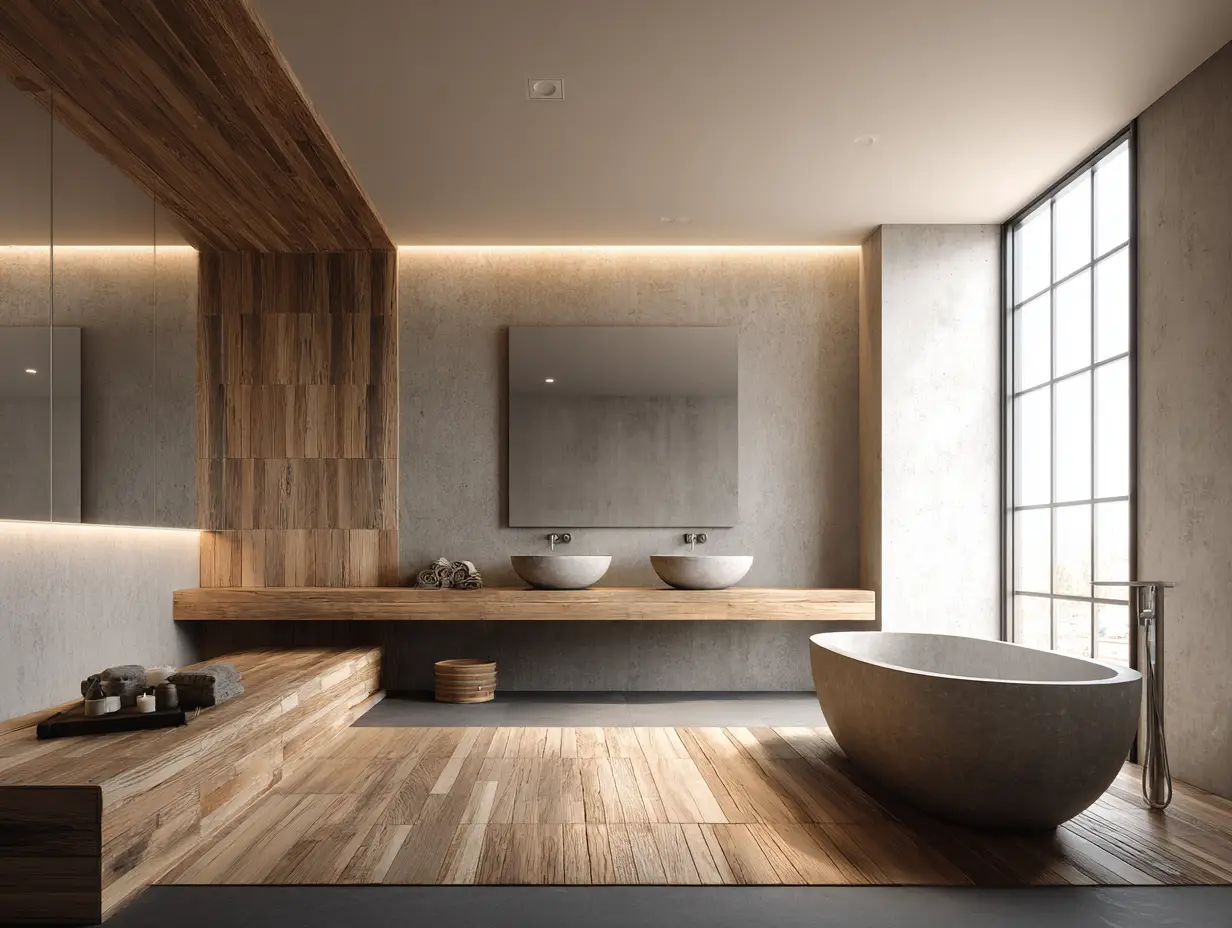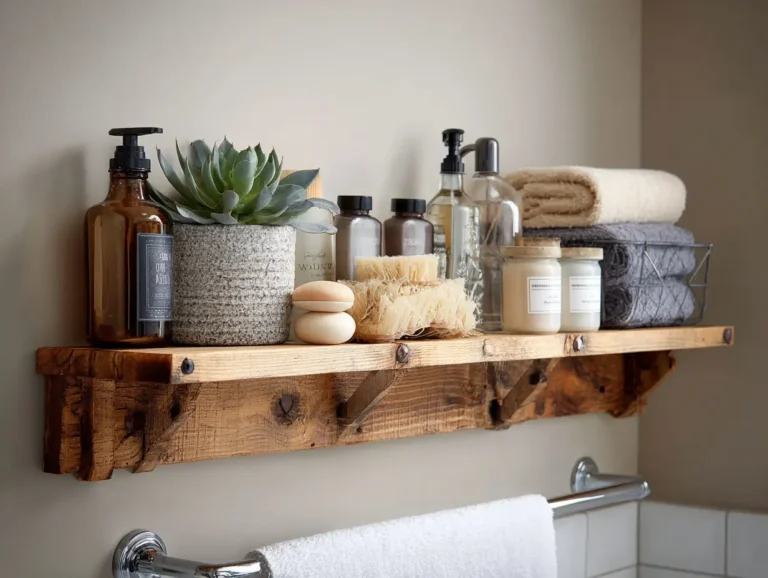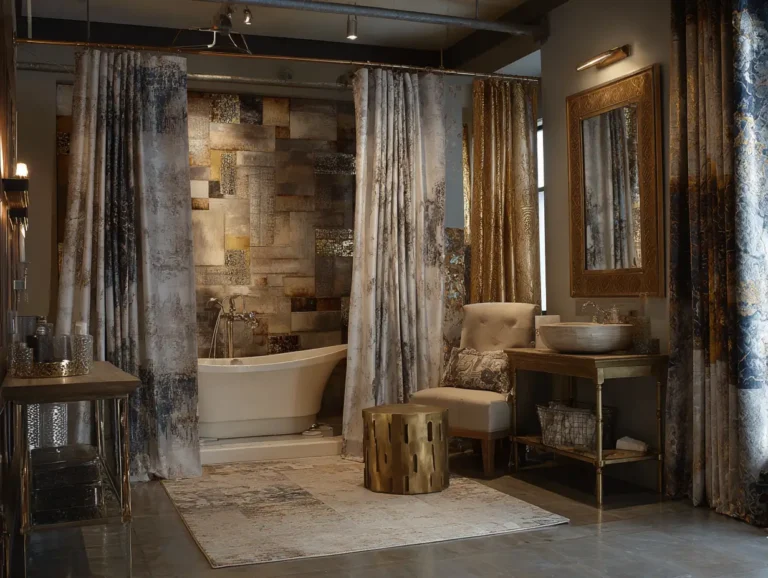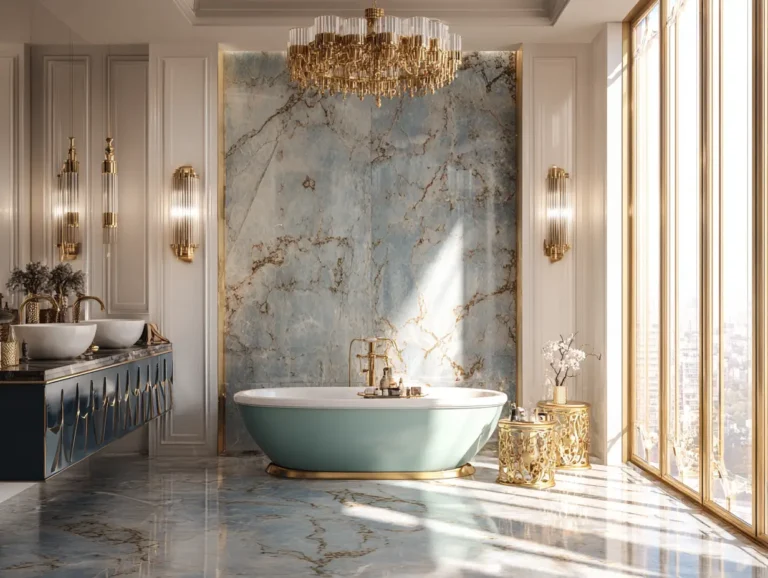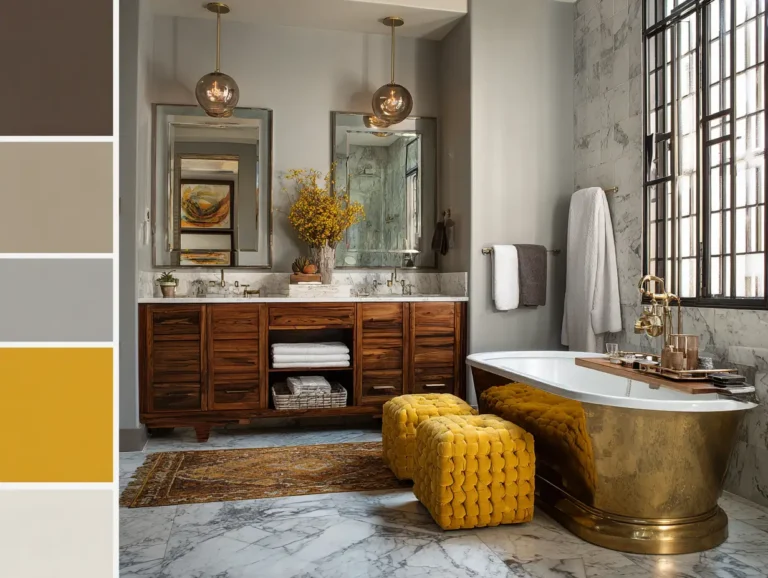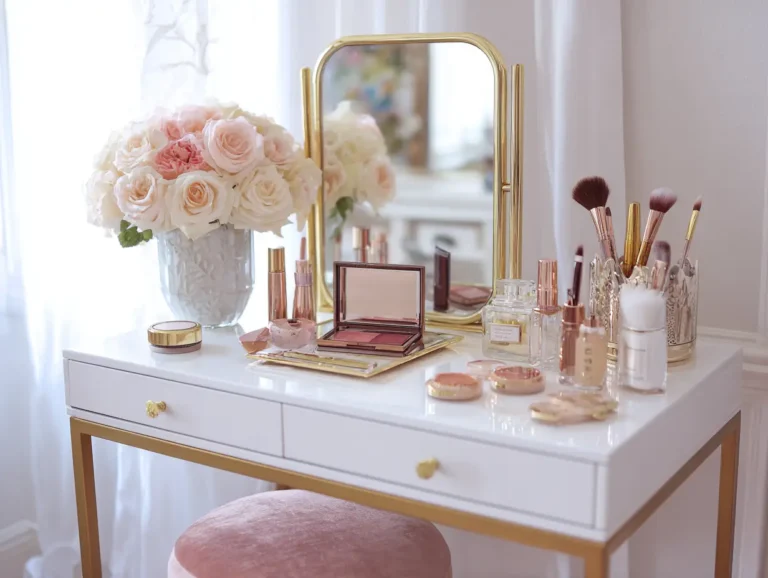10 Minimalist Bathroom Looks for Modern Homes
Imagine walking into a bathroom where every detail feels intentional—sunlight reflecting off clean surfaces, clutter tucked neatly out of sight, and a soothing sense of calm that lingers long after you leave. That’s the power of minimalist bathroom design. It isn’t just about cutting back on décor; it’s about curating what matters most and letting your space breathe. In a world where we’re constantly bombarded with visual noise, creating a streamlined bathroom becomes more than a design choice—it becomes a lifestyle upgrade.
According to environmental psychology, orderly and uncluttered interiors help reduce stress levels and improve focus. And since bathrooms are often the first and last spaces we enter each day, their design can set the tone for everything that follows. These 10 minimalist bathroom looks prove that with the right choices, even the smallest bath can feel like a spa-worthy sanctuary.
1. All-White Serenity
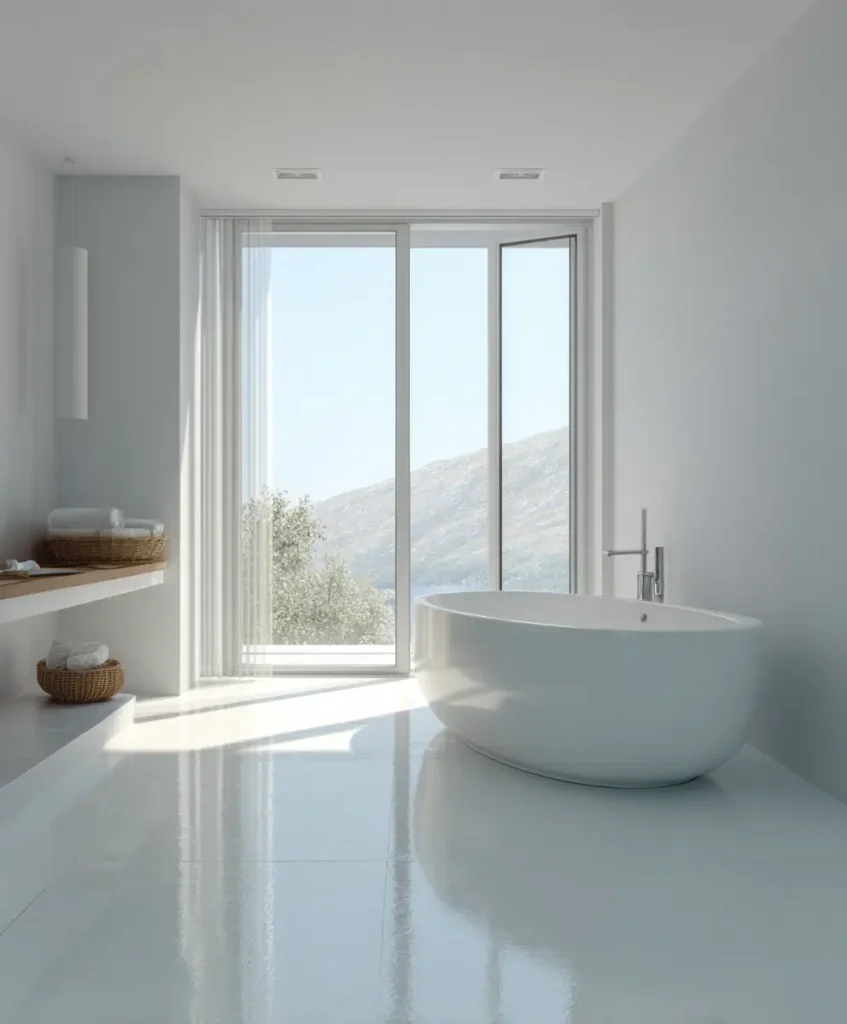
A crisp, all-white bathroom remains a timeless minimalist classic because it reflects purity, calm, and expansiveness. White surfaces bounce natural and artificial light, making even compact bathrooms feel larger. The psychology behind this is simple: white represents clarity, giving the mind space to breathe. Designers often rely on it for homeowners seeking serenity and simplicity.
Pro Tip: Incorporate warm white LED lighting to avoid sterility. Layer in textured white bath mats or ribbed towels to add subtle contrast without breaking the palette.
Example: A minimalist white subway-tiled shower paired with a floating matte-white vanity and soft linen curtains feels both expansive and inviting.
2. Natural Wood Accents
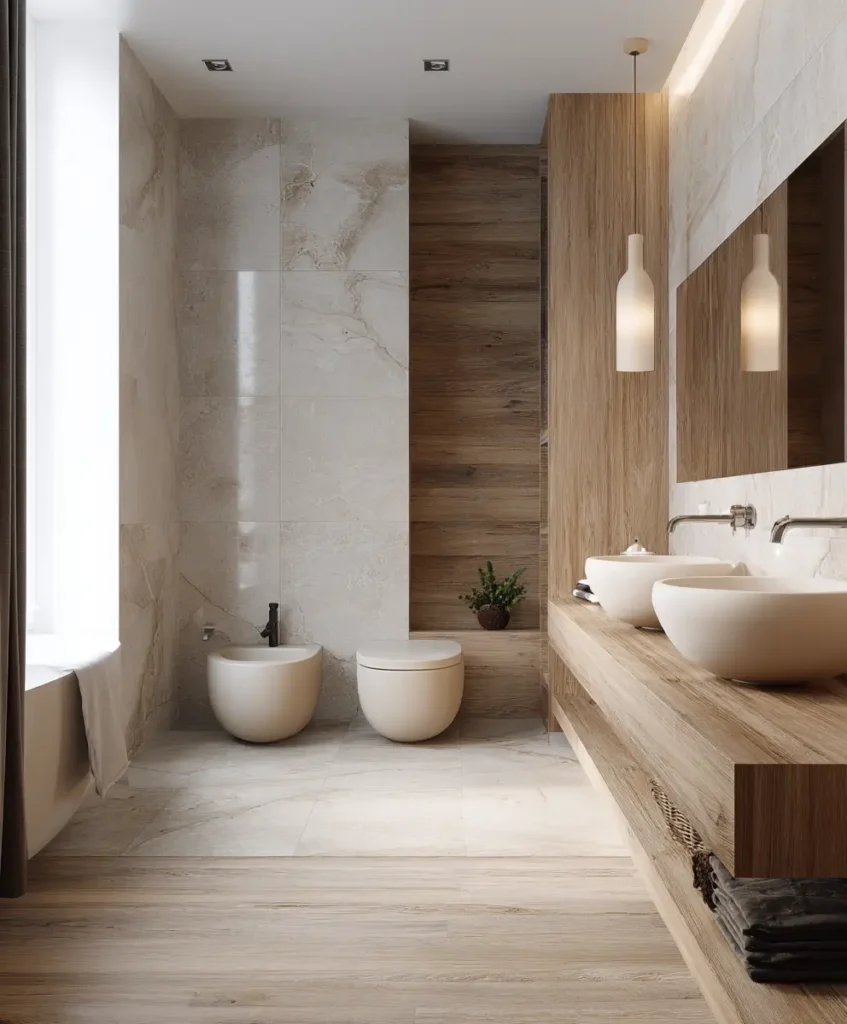
Minimalism doesn’t mean cold or clinical. Introducing natural wood instantly adds warmth and texture, grounding a minimalist bathroom in nature. Scandinavian design, beloved for its calming aesthetic, frequently blends crisp white walls with pale oak or walnut details, proving that simplicity and coziness can coexist.y, natural elements promote relaxation—key for transforming a bathroom into a restorative retreat.
Pro Tip: Choose moisture-resistant woods like teak or use sealed finishes to prevent water damage. Even a small wooden stool or floating shelf can shift the mood dramatically.
3. Floating Vanities for Visual Space
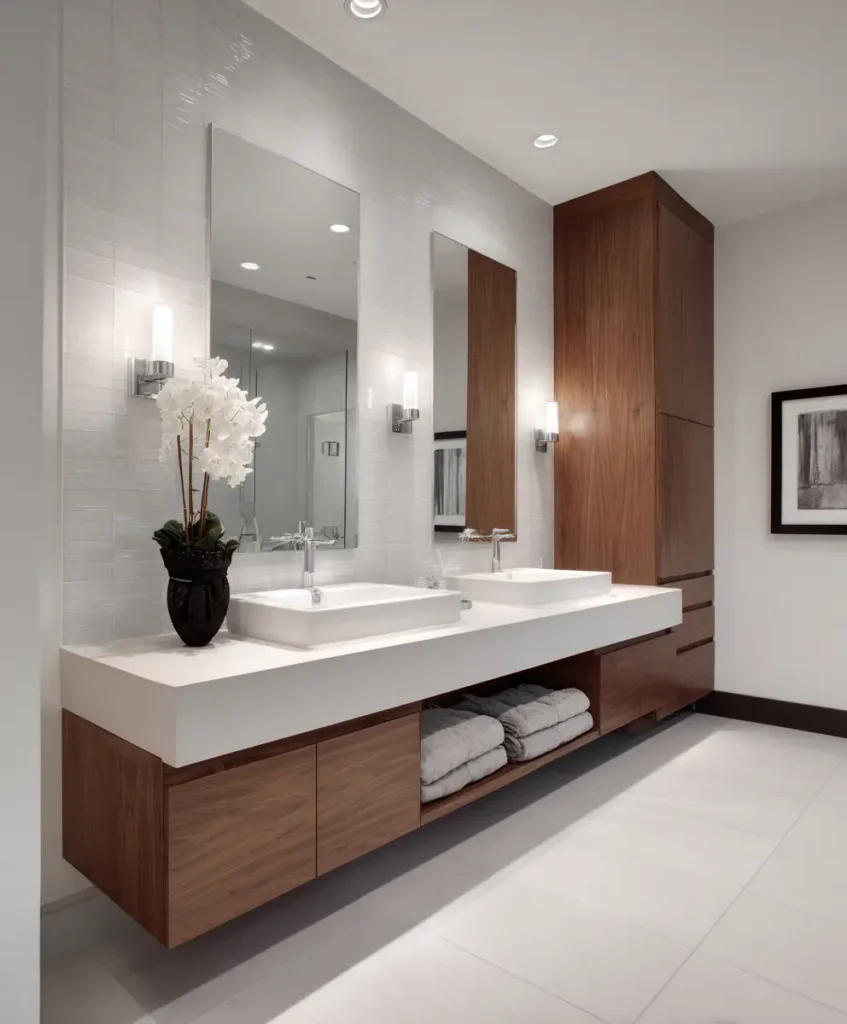
Bulky cabinetry tends to dominate bathrooms, especially in smaller spaces. Floating vanities solve this problem by opening up floor space, creating a sense of lightness and flow. The absence of legs visually expands the room, a principle often used in modern interior design to make compact areas feel more breathable.
Pro Tip: Add under-vanity LED lighting. Not only does it enhance the floating illusion, but it also doubles as a gentle nightlight—ideal for midnight trips without harsh overhead brightness.
4. Monochrome Minimalism
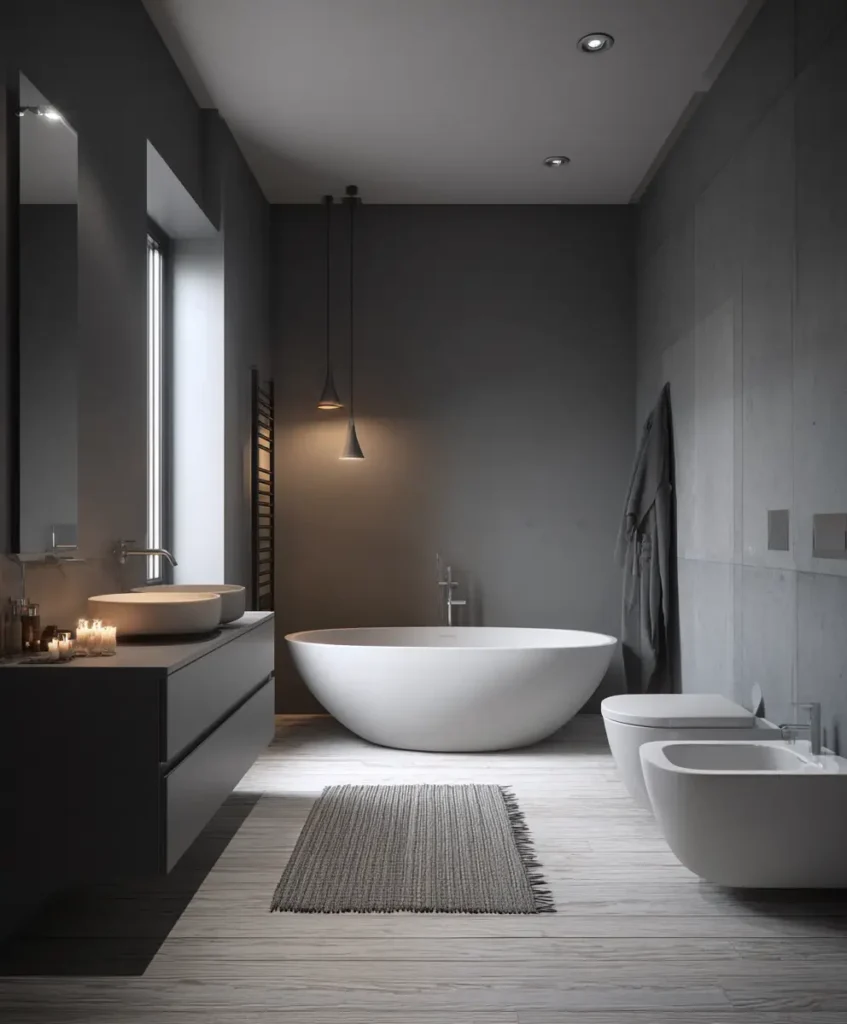
Few combinations are as striking as black and white. This minimalist pairing works because it’s bold yet balanced, creating drama without visual chaos. The stark contrast brings definition and structure, while the simplicity of the palette keeps the bathroom looking polished and intentional.
Pro Tip: Limit black to accents—faucets, mirror frames, or hardware. Too much can overwhelm small spaces, but the right touch adds modern sophistication.
5. Frameless Glass Showers
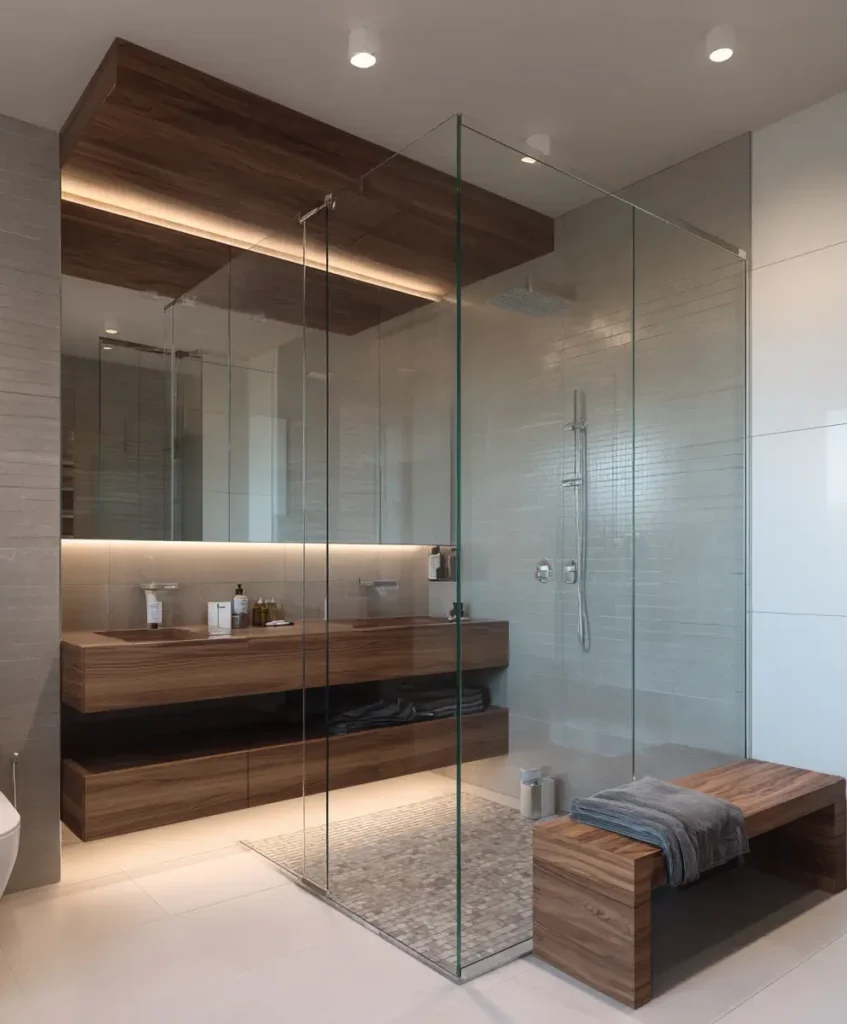
Clunky shower doors and thick frames interrupt flow. Frameless glass showers eliminate barriers, offering seamless sightlines that make bathrooms appear larger and lighter. They also highlight beautiful tilework, making design details part of the overall aesthetic.
Pro Tip: Opt for large-format shower tiles to minimize grout lines, reinforcing the streamlined effect. Clear glass works best, though frosted options can maintain privacy while still preserving flow.
6. Concrete and Stone Elements
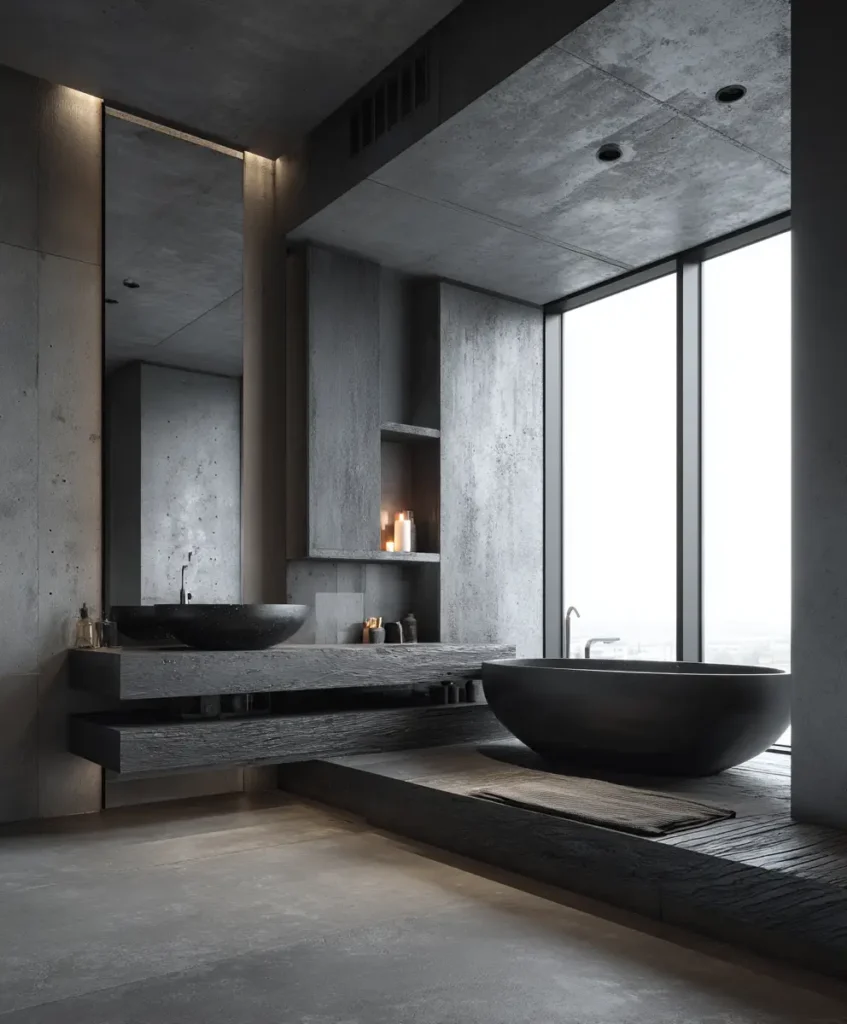
Minimalist interiors often embrace raw, honest materials like concrete and stone. These elements add tactile depth while maintaining a pared-back aesthetic. Concrete sinks or stone floors exude durability and calm, reflecting the growing trend of Japandi and industrial-inspired bathrooms.
Pro Tip: Seal porous surfaces to prevent staining. Pair stone or concrete with matte black or brushed brass fixtures for a striking yet understated look.
Example: A concrete basin atop a floating wooden vanity evokes spa-like tranquility with industrial edge.
7. Built-In Niches Instead of Shelving
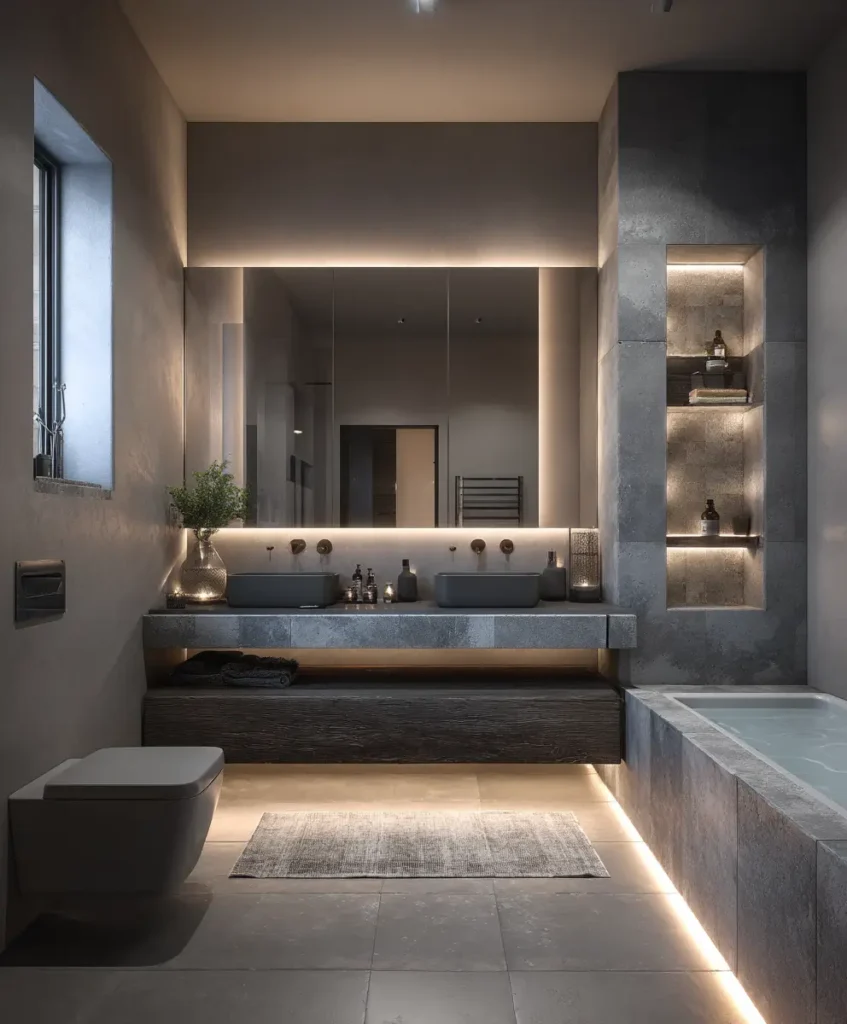
Minimalist bathrooms thrive on hidden storage. Instead of bulky shower caddies or wall-mounted shelves, built-in niches keep toiletries neatly tucked within recessed walls. This design not only saves space but also eliminates visual clutter, reinforcing clean lines.
Pro Tip: Keep products minimal—display only essentials in matching containers for a cohesive, spa-like look.
8. Soft Neutral Palettes
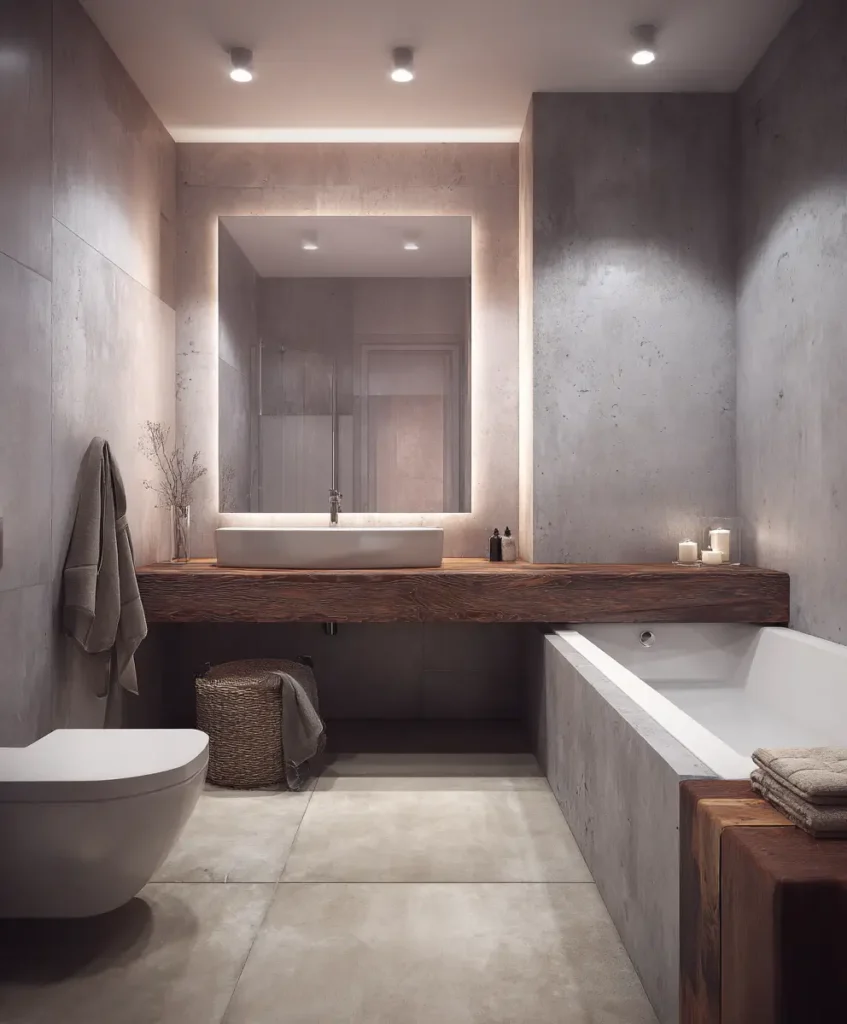
White isn’t the only minimalist color. Soft neutrals like taupe, beige, and pale gray offer warmth while keeping the space calm and restrained. These tones are timeless, versatile, and especially effective for homeowners seeking a bathroom that feels cozy but uncluttered.
Pro Tip: Add a textured neutral rug or woven baskets to reinforce softness and prevent the space from feeling too monotone.
9. Statement Mirrors with Clean Lines
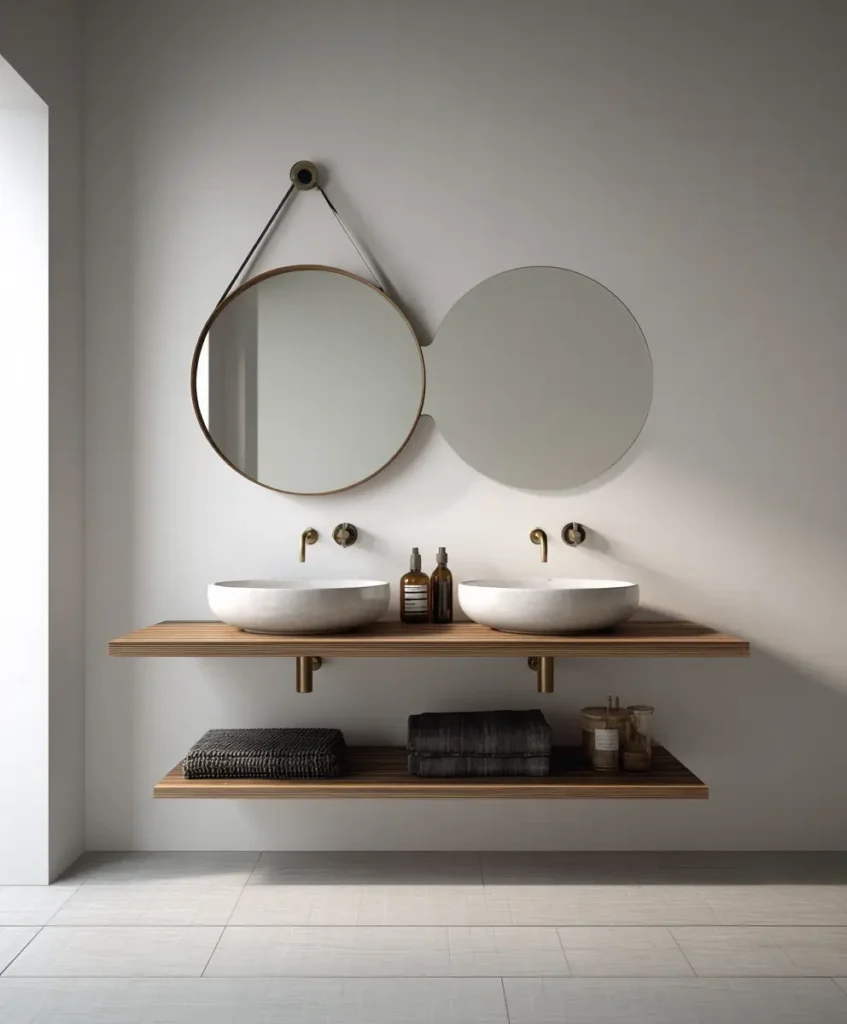
In minimalist bathrooms, mirrors aren’t just functional—they’re focal points. Large frameless mirrors or those with ultra-thin frames amplify light and create the illusion of extra space. Shapes like round or oval break up angular lines, softening the look while maintaining simplicity.
Pro Tip: Position mirrors to reflect natural light sources whenever possible. This brightens the room and reinforces openness.
10. Hidden Storage for Clutter-Free Living
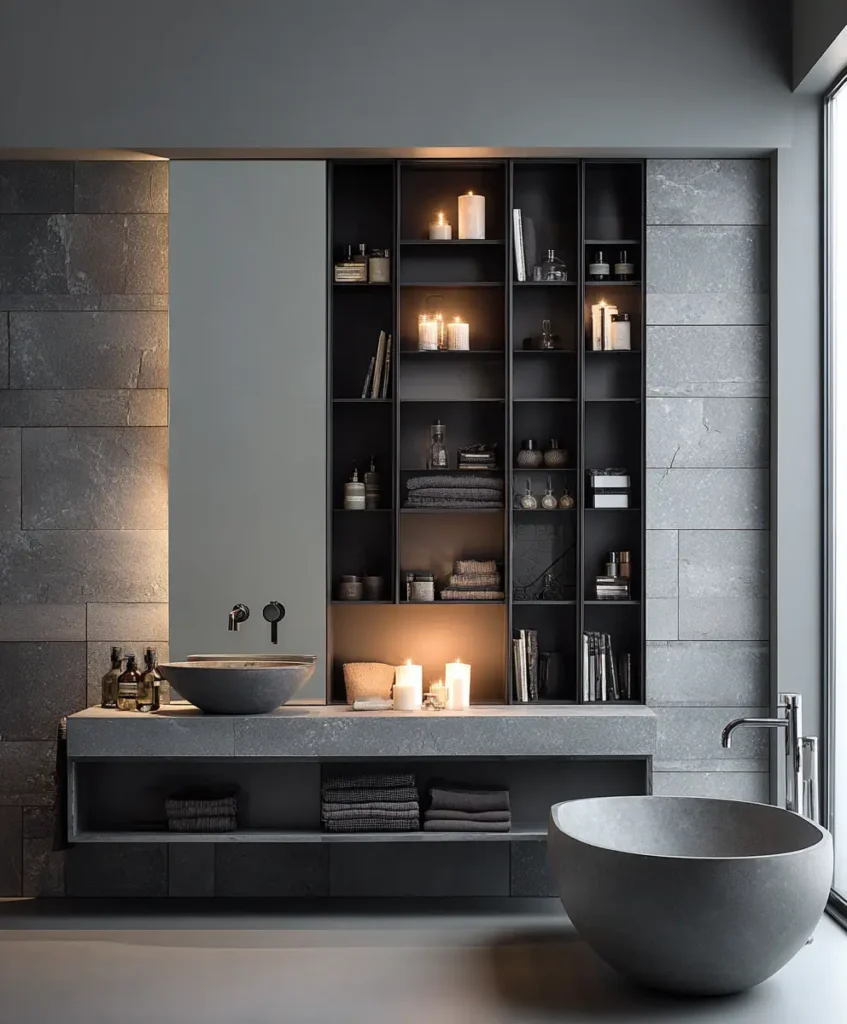
Minimalist bathrooms rely heavily on what you don’t see. Hidden storage—vanity drawers with organizers, recessed medicine cabinets, and built-in cabinetry—keeps counters free from clutter. The principle here is simple: visual simplicity encourages mental clarity.
Pro Tip: Make decluttering a routine. Rotate products seasonally and keep only daily essentials accessible. The fewer items visible, the stronger the minimalist effect.
Conclusion
Minimalism in the bathroom isn’t about deprivation—it’s about intentional living. By choosing clean lines, natural textures, and clutter-free solutions, you can transform your bathroom into a sanctuary that feels both functional and restorative.
Which of these minimalist bathroom looks resonates with your style? Tell us in the comments—we’d love to hear how you’re reimagining your space.

